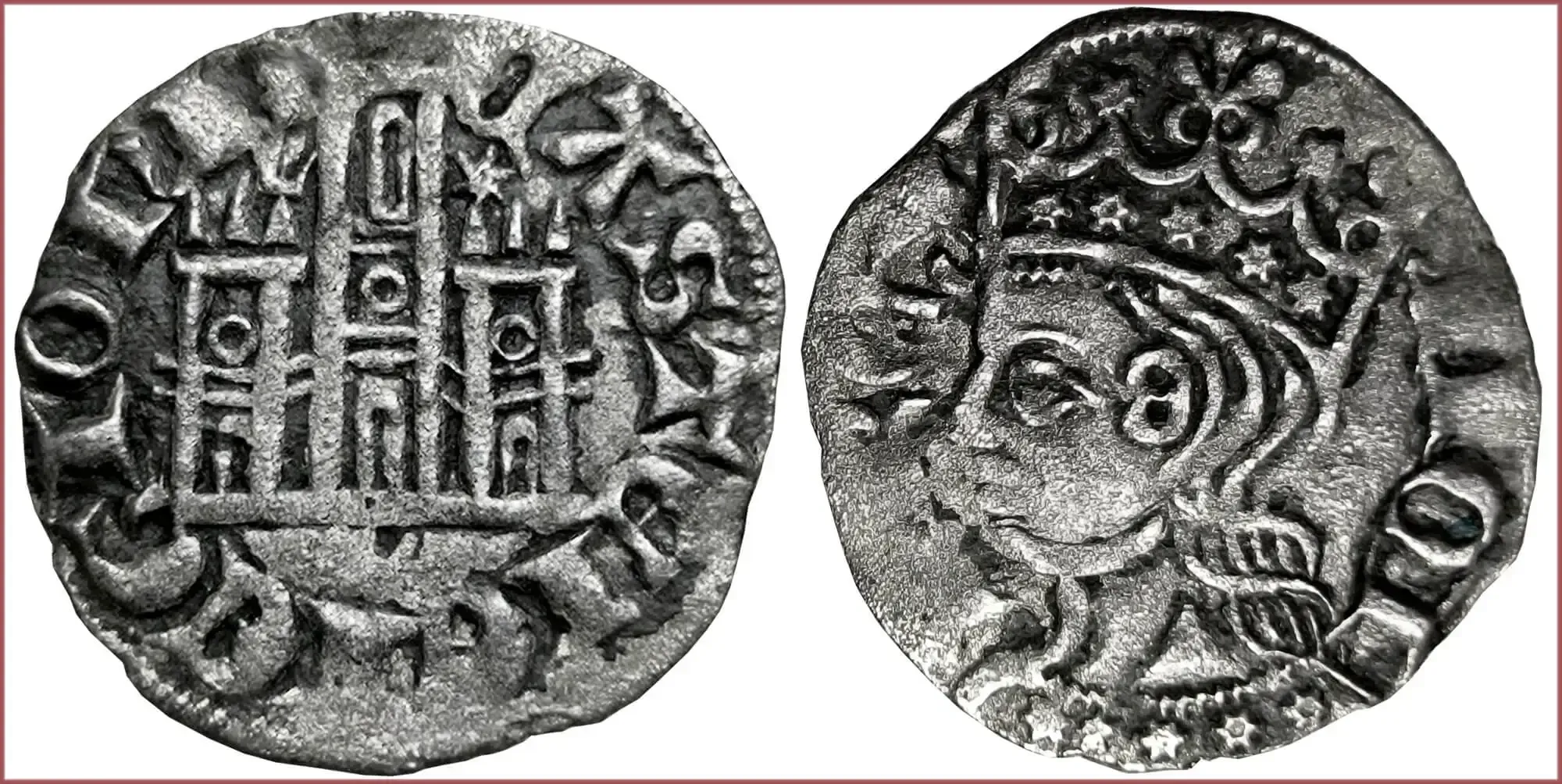CORNADO: COIN OF CASTILE (SPAIN)
Cornado (dinero), 1333-1350: Crown of Castile (Kingdom of Castile and Leon)
Crown of Castile (1230-1715) — medieval polity in the Iberian Peninsula that formed in 1230 as a result of the union of the crowns of the kingdoms of Castile and León. This state formation became the basis of the newly formed kingdom of Spain in 1715.
Ruler: Alfonso XI (also known as "Avenger" or "el Justiciero" by Spanish) — King of Castile and León (nowadays Spain); the son of Ferdinand IV of Castile and Constance of Portugal.
CASTELLE E LEGIONIS: Castile and Leon.
Coat of arms of the Kingdom of Castile: a castle with 3 towers, windows and a gate; used in Spanish heraldry since the 12th century. After the union of Castile and León in 1230, it became the basis of the coat of arms of the Crown of Castile (Castile and León union Kingdom), and later — of the modern Spanish Kingdom.
ALFONS REX: Alfonso King.
Crowned bust of Alfonso XI.
- Silver (billon): 18 mm - 0.7 g
- Reference price: 26.3$
COIN CORNADO — WHERE & WHEN (coins catalog: by names & emitents)
- KINGDOM OF CASTILE AND LEON, SPAIN (13th-15th centuries): cornado = dinero
- KINGDOM OF NAVARRE, SPAIN (15th-18th centuries): cornado = 1/72 real
CORNADO as coin name.
Cornado — purely Spanish historical coin. It was produced during the 13th-18th centuries.
Personally, I consider two conditional varieties of cornado: classic and atypical.
I call classic the cornado of the Spanish Kingdom of Castile and Leon of the 13th-15th centuries. These were silver (albeit low grade, i.e., billon) coins with the same type of subject: a crowned portrait of the reigning monarch and the coat of arms of the Kingdom of Castile (a castle with 3 towers).
It was the monarch in the characteristic crown who gave the name to this coin, although at first it was the usual for Spain dinero. Sometimes in the catalogs you can find such a denomination name — dinero "cornado".
As for atypical cornado in my own classification, I mean billon or even copper coins of Kingdom of Navarre (15th-18th centuries). They had a completely different plot: the early types featured a crown without a king, while the later ones looked quite different.











